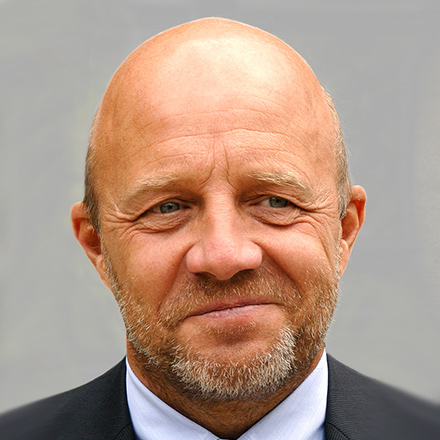Graduated in 1980 as dentist at the Catholic University of Leuven and finished in 1984 his training in periodontology at the department of Periodontology (Catholic University Leuven). In 1986 he presented his Ph. D. entitled: Anatomical and inflammatory factors influence bacterial plaque growth and retention in man. In 1990 he was appointed professor at the Faculty of Medicine of the Catholic University of Leuven to teach periodontology and anatomy. His research deals mainly with oral microbiology (with special attention to the influence of surface characteristics on bacterial adhesion and the effect of antiseptics), oral malodour, simplification & optimization of periodontal therapy including implant surgery. He published over 300 full papers in international peer-reviewed journals. He is member of the editorial board of the Journal of Clinical Periodontology (associate editor), Clinical Oral implants Research, Journal of Dental Research, Periodontal Practice Today & Parodontologie.
Click here for abstract:
 L-PRF: the future for optimal bone & soft-tissue healing? - Part 1
L-PRF: the future for optimal bone & soft-tissue healing? - Part 1
Leucocyte- and platelet-rich fibrin (L-PRF), a second generation platelet concentrate, is an autologous blood derived product, which can be obtained, quickly and at low cost. L-PRF is produced from peripheral blood, which is immediately centrifuged without any anticoagulant. L-PRF is rich in fibrin, platelets (± 95% of initial blood) and leucocytes (± 50% of initial blood), an can be transformed into strong membranes circa 1 mm in thickness.
L-PRF membranes releases large amounts of growth factors for a long period (up to 7 days). They remain intact for more than 7 days due to a specific polymerization and architecture of the fibrin matrix, and they possess antibacterial effects.
L-PRF membranes offer “significant” and “clinically relevant” advantages in several indications.
Part one will discusses important parameters in the preparation of L-PRF and its application for ridge preservation.
 L-PRF: the future for optimal bone & soft-tissue healing? - Part 2
L-PRF: the future for optimal bone & soft-tissue healing? - Part 2
Leucocyte- and platelet-rich fibrin (L-PRF), a second generation platelet concentrate, is an autologous blood derived product, which can be obtained, quickly and at low cost. L-PRF is produced from peripheral blood, which is immediately centrifuged without any anticoagulant. L-PRF is rich in fibrin, platelets (± 95% of initial blood) and leucocytes (± 50% of initial blood), an can be transformed into strong membranes circa 1 mm in thickness.
L-PRF membranes releases large amounts of growth factors for a long period (up to 7 days). They remain intact for more than 7 days due to a specific polymerization and architecture of the fibrin matrix, and they possess antibacterial effects.
L-PRF membranes offer “significant” and “clinically relevant” advantages in several indications.
Part two will show the outcome of L-PRF in sinus augmentation, horizontal/vertical bone augmentation and osseointegration.


